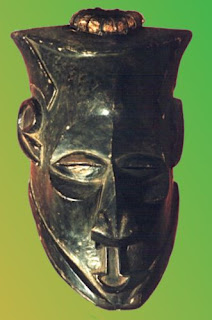African Masks
| Category | Yarn | |||||
| Time to allocate (mins) | 10 | |||||
| Story |
African Mask History
African masks
are a popular art form. Elaborately carved and decorated masks have
been made in Africa for thousands of years. Most African masks are made
by unknown artists and creating masks is a highly respected skill.
Masks can vary in size, shape and mediums including fabric, metal,
various woods, and leather.
Masks will usually show the faces of spirits - a god, an ancestor or an animal. Artists carve and paint each mask in a particular way, so people know which spirit it is meant to be. They believe that if you put on a mask, the spirit is revealed and it will enter your body.
Traditionally, masks are worn during important ceremonies, such as harvest festivals and funerals. Many young people wear masks to go through secret rites marking the end of their childhood. The mask ceremonies are full of drama and music. The mask wearers perform ritual dances, stamping and clapping, and sometimes speaking for the spirits of the masks. Often dancers wear elaborate costumes to go with their masks. African masks are worn in ceremonies in different ways. For example, they can be worn vertically covering the face, as crests resting on the head, or as helmets that encompass the entire head to convey a disguise. African masks are highly sought after by art collectors because they are considered some of the most unique and fine art creations in the world. You can find African masks in almost any major art gallery or museum all over the world. Not all people can create an African mask. The people who can make it well usually have special status in the African society. Making the mask requires knowledge and skill. The gift usually is passed from generation to generation. The shape of an African mask is very unique. It usually reflects the face of animal or human beings. But you can also see the mask resemble combination of both features. Wearing a mask is considered as an honor in various African tribes. Not all of members in the African tribes can wear the mask. The elder and only few men can wear it. |

